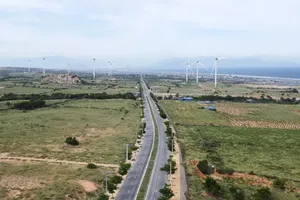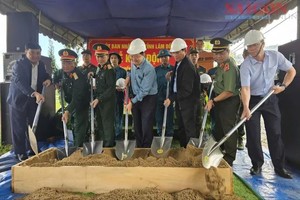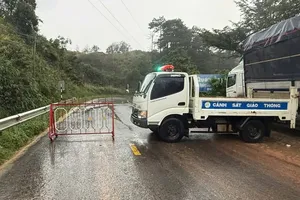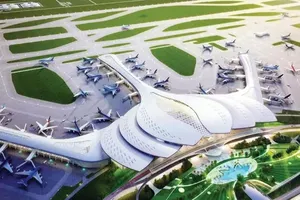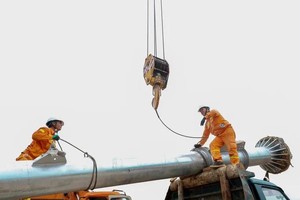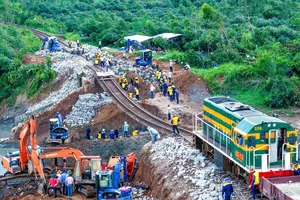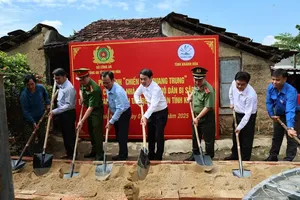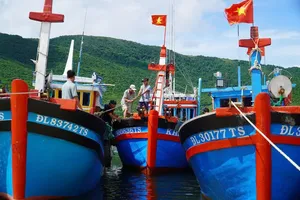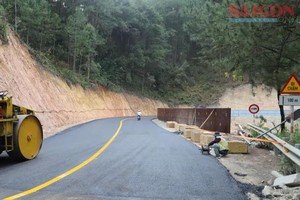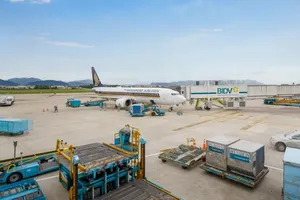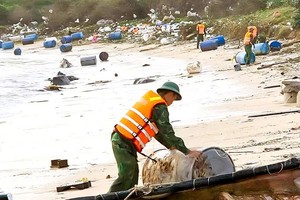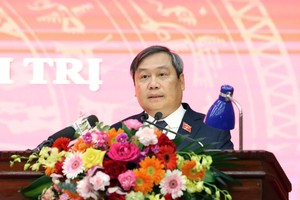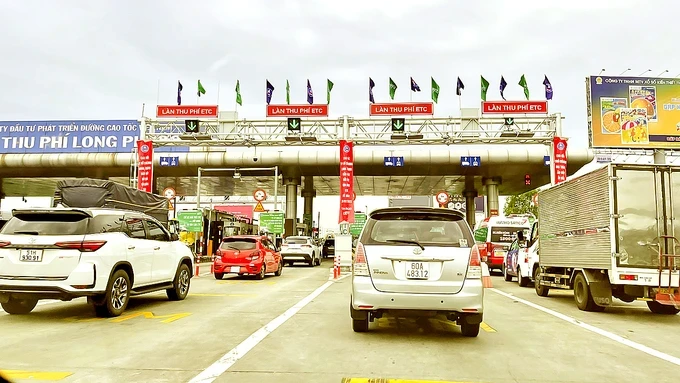
Seeing the seriousness of traffic congestion on the HCMC – Long Thanh – Dau Giay Expressway, the Transport Ministry and the Commission for Management of State Capital at Enterprises (CMSC) agree upon its expansion from 4 to 8-10 lanes to better serve socio-economic needs. This is consistent with the road network planning in the 2021-2030 period, with a vision to 2050, where this expressway is supposed to have 10 lanes.
At present, the 4-kilometer section from An Phu Intersection to Ring Road 2 is being widened by 4.75m on each side under the direction of the HCMC People’s Committee to have a total width of 36m for 8 lanes. The improvement is expected to finish next year.
The rest from Ring Road 2 to Long Thanh District (21.92km) in under consideration of CMSC and Vietnam Expressway Services Engineering JSC (VEC). The section from Ring Road 2 to the intersection with Ring Road 3 (Km4+000 - Km8+770) will be expanded to 8 lanes, and the one from Ring Road 3 to the intersection with the Bien Hoa – Vung Tau Expressway (Km8+770 - Km25+920) will have 10 lanes.
As to Long Thanh Bridge, VEC proposed to build a new one with 10 lanes and no emergency lane. Each new side will have 5 lanes of 3.5m wide each. The total estimated cost is VND15.2 trillion (US$613.7 million), exclusive of loan interest during the construction time. This has become the most formidable obstacle.
In September 2022, VEC proposed the Transport Ministry and CMSC allocate 44 percent of this capital need from the state budget. However, that was refused as there was no longer any medium-term public investment capital for the 2021-2025 period to distribute to the project.
VEC has recently sent a new proposal with four possible alternatives for investment in this project:
- Alternative 1: VEC mobilizes all capital, 40 percent of which from its own capital and the rest from credit or financial organizations;
- Alternative 2: VEC mobilizes 53.58 percent from different sources while the state budget contributes 46.42 percent;
- Alternative 3: VEC collaborates with State Capital Investment Corporation (SCIC), where the former is in charge of 57 percent and the latter 43 percent;
- Alternative 4: VEC collaborates with private investors under the Public-Private Partnership (PPP) model with support from the state budget, which delivers 45.58 percent of the total investment.
After consideration, CMSC voiced that with current conditions, the second alternative is the most feasible. It is in accordance with the goal to establish VEC in the first place. VEC continues to be the main investor to ensure consistency of the whole project and to save time with no need to go over the investor selection procedure once more.
Investing state budget capital in a project through increasing charter capital for an enterprise before that business pour money into the project and determine prices in compliance with applicable regulations helps to recover invested capital and ensure capital development in that enterprise. This is consistent with the aim and request of the Standing Committee of the Government.
However, since the expansion project is a public-invested one, it should be included in the list of medium-term public investment plan, submitted to the National Assembly for approval.
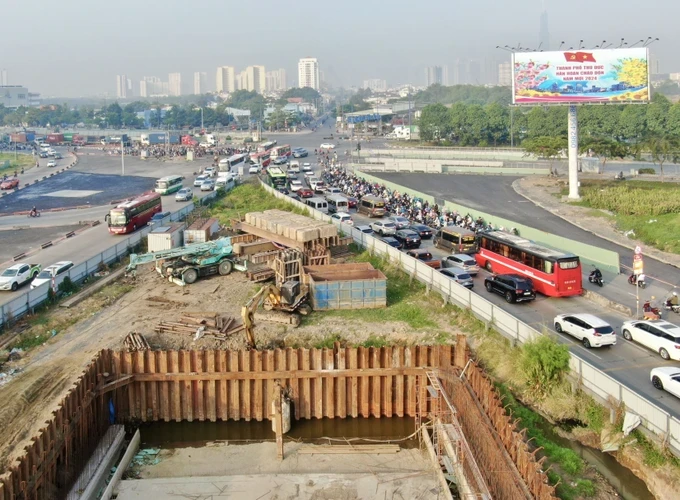
In the case that VEC is allowed as the main investor of the above project, it is necessary to address all issues related to increasing charter capital, extending the deadline to repay the bond principal paid by the Ministry of Finance from the 2022-2027 period to the 2032-2035 one, along with the arisen interest.
If VEC is considered as not eligible to be the project’s main investor, CMSC proposes the Transport Ministry ask for direction from the Prime Minister as to the investment model for this project.
The Transport Ministry selects the second alternative above and still chooses VEC because it has been the main investor for the first construction of the expressway and is operating it to repay the loan from the Asian Development Bank (ADB). VEC is expected to become the main investor of the whole expressway network in Vietnam as private businesses are not yet capable to mobilize capital under the PPP model.
At the moment, VEC is in charge of five expressways, namely Cau Gie – Ninh Binh, HCMC – Long Thanh – Dau Giay, Noi Bai – Lao Cai, Da Nang – Quang Ngai, and Ben Luc – Long Thanh. The total investment for these roads is VND105 trillion ($4.25 billion). VEC has to pay a loan of VND58.7 trillion ($2.37 billion) but its charter capital is merely VND1.11 trillion ($45 million).
Obviously, VEC is going to encounter various obstacles applying for new loans from commercial banks, and hence the need to increase its charter capital as instructed by the Prime Minister. This will both reflect the current financial power of the State in VEC and offer a chance for VEC to contribute to improving the traffic facilities in Vietnam for socio-economic growth.
Long Thanh International Airport is planned to come into operation in 2026, yet the routes linking it to HCMC frequently see congestion (HCMC – Long Thanh – Dau Giay) or tardiness in construction (the expressways of Long Thanh – Ben Luc and Bien Hoa – Vung Tau).
Therefore, the Dong Nai Province People’s Committee asked that the National Assembly and the Prime Minister urgently consider and approve the projects to expand the HCMC – Long Thanh – Dau Gay Expressway to 8-10 lanes and to build an elevated railway linking Thu Thiem – Long Thanh District for stronger traffic connection from air-road-railway.
Before that, Vice Chairman Vo Tan Duc of the Dong Nai Province People’s Committee had also recommended the construction of Cat Lai Bridge to replace Cat Lai ferry to avoid overloading situations in the future when Long Thanh International Airport comes into operation in 2026.
